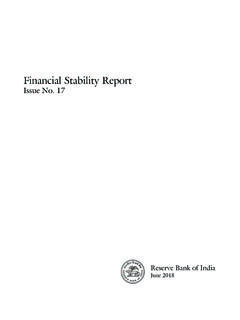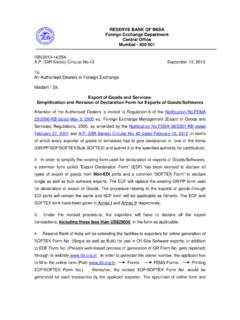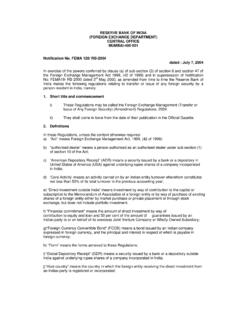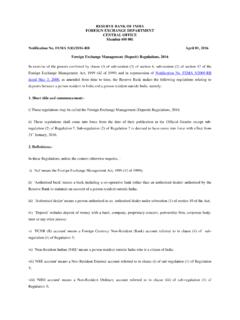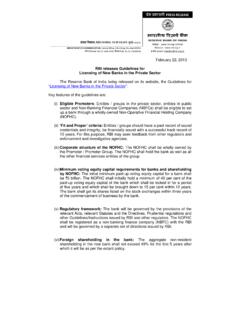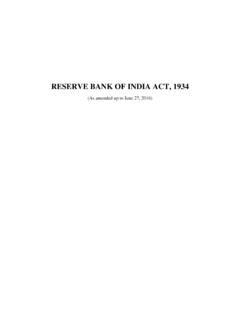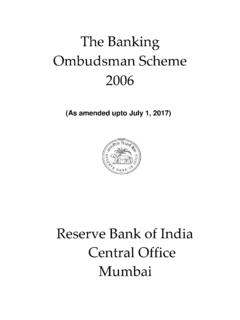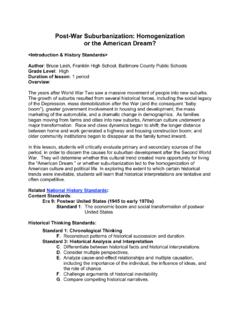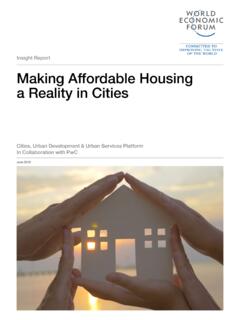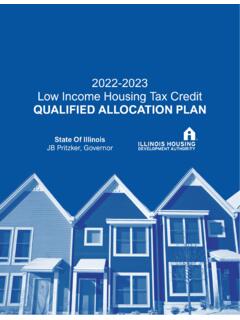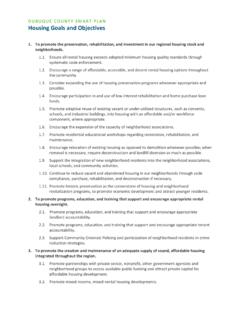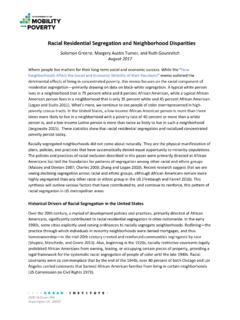Transcription of Affordable Housing in India*
1 ARTICLERBI Bulletin January 201813 Affordable Housing in Indiaperiod, an attempt has been made in this article to study various dimensions of Affordable Housing . The rest of the article is structured into six sections. Section 2 discusses various measures of Housing affordability and the international experience in the policy design for Affordable Housing . Section 3 highlights the need for Affordable Housing in India and the steps taken by the Government and the Reserve Bank of India to provide a boost to this sector. Section 4 presents some stylised facts based on Housing credit data.
2 An empirical assessment of the impact of Credit Linked Subsidy Scheme on Housing affordability is provided in Section 5. Section 6 flags some of the major challenges faced by the Affordable Housing sector in 2: The International Experience There are various methodologies adopted internationally to estimate Housing affordability: (i) Expenditure Method or Housing Cost Burden: The ratio of Housing expenditure to household income is used to measure affordability. Housing expenditure covers all the costs related to Housing including rentals, mortgage repayments, utilities and maintenance costs.
3 Housing units can be classified as Affordable if the ratio is less than some cut-off value. The choice of this cut-off is judgemental; however, as a thumb rule, it is taken to be 30 per cent. (ii) Median Multiple Indicator: Under this approach, the median house price is divided by median household annual income to derive Housing affordability. Demographia International, an organisation which conducts survey across countries for Affordable Housing , considers price to income ratio below 3 to classify Housing units as Affordable .
4 (iii) Housing and Transport (H+T): In this method, transport costs are also included Rapid urbanisation and migration to cities have caused severe urban Housing shortages in India, particularly for the economically weaker sections. In this context, the Government and the Reserve Bank of India have undertaken a number of initiatives to boost Affordable Housing . Even as loan disbursements as well as launches of new projects in the Affordable Housing segment have risen sharply in 2016-17, there was an increase in non-performing Housing loans, particularly for the lower slabs of home loans.
5 While the credit linked subsidy scheme was found to be effective in improving the Housing affordability of the economically weaker sections, unlocking of land in the urban areas poses a major challenge for further development of the 1: Introduction In India, rapid urbanisation has given rise to development challenges in the form of urban congestion, pressure on basic amenities like water and sanitation and most importantly, severe Housing shortages in cities, especially, in the low cost segment. Real estate developers and private players tend to focus on middle income and high income segments due to higher returns.
6 In addition, issues relating to high land costs, delay in project approvals, increasing raw material costs and low profit margins have made low cost Housing projects less attractive for private realty investors and developers. In order to bridge this demand supply gap, the Government of India has recently taken major initiatives to provide a boost to Affordable Housing in India, complemented by a number of measures by the Reserve Bank of India (RBI). In view of the increased attention received by Affordable Housing in the recent * This article is prepared by Shri Ajesh Palayi and Shri Nalin Priyaranjan under the guidance of Dr.
7 Atri Mukherjee in the Structural Issues Division of the Department of Economic and Policy Research, Reserve Bank of India. The views expressed in this article are those of the authors and do not represent the views of the Reserve Bank of India. Affordable Housing in India* ARTICLERBI Bulletin January 201814 Affordable Housing in Indiawith Housing costs to measure affordability. The underlying idea is that congestion in cities has led to rise in human settlements at long distances from the city centre, which has resulted in increase in costs and time spent in commuting (Hamidi et al.)
8 , 2016). During the period 2000-2016, Housing prices across the world showed an increasing trend, temporarily interrupted by the global financial crisis of 2008-09, with India s nominal house price index increasing at the fastest rate (Chart 1). This incidence has prompted different countries to undertake targeted policy actions for providing Affordable Housing to economically weaker sections. In this regard, the lessons drawn from the country experiences provide useful insights. The policies adopted towards Housing affordability by select countries, viz.
9 , the United States, Australia and China (for which detailed information is available) are discussed United States of America In the United States (US), the Department of Housing and Urban Development (HUD) defines Affordable Housing by the expenditure approach, under which Housing is deemed Affordable if it costs less than 30 per cent of the household income. It estimates that there are 12 million renter and homeowner households which pay more than 50 per cent of their annual income for Housing , and face difficulties in obtaining necessities such as food, clothing, transportation and medical care.
10 Affordable Housing programmes in the US are sponsored by both the federal and the state governments: (i) Under the Housing Choice Voucher (HCV) programme, the HUD disburses funds to public Housing agencies (PHAs) for providing rental subsidies to the eligible families. The maximum assistance received by a family is equal to standard rent1 minus 30 per cent of monthly adjusted income. It involves agreements among the participants, viz., tenants, landlords and PHAs. However, the number of Housing cost burdened HCV households has increased by 52 per cent from 517,655 in 2003 to 786,958 in 2015 driven 1 Payment standard that is the amount generally needed to rent a moderately-priced dwelling unit in the local Housing Bulletin January 201815 Affordable Housing in Indiaprimarily by variation in income and Housing market cycles (HUD, 2017).
